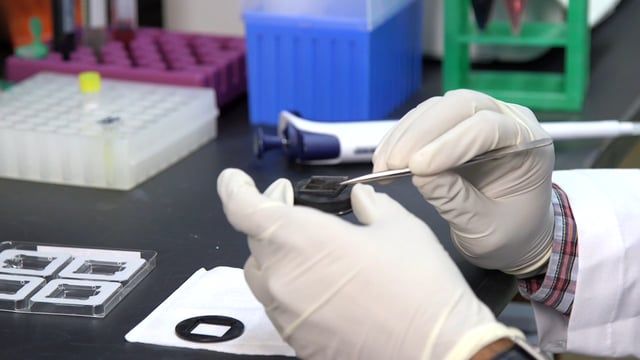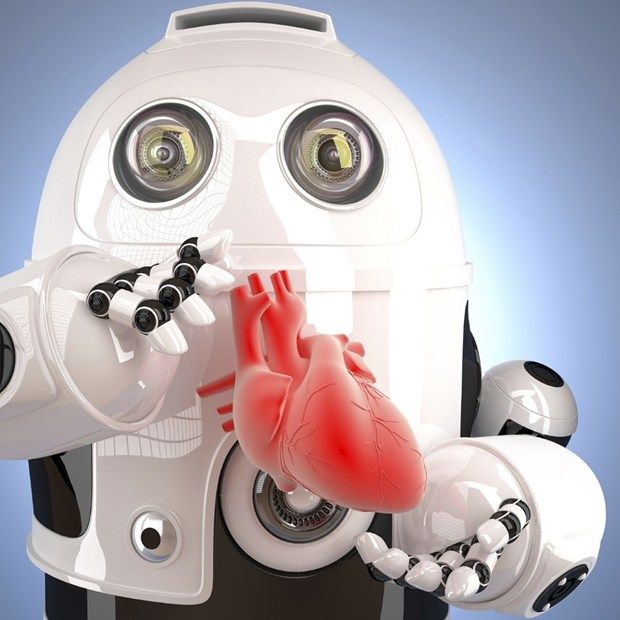Scanning the genomes of centenarians showed that four genes help them live longer. The discovery could boost the search for ways to protect against age-related diseases.


Scanning the genomes of centenarians showed that four genes help them live longer. The discovery could boost the search for ways to protect against age-related diseases.

US army’s report visualises augmented soldiers & killer robots.
The US Army’s recent report “Visualizing the Tactical Ground Battlefield in the Year 2050” describes a number of future war scenarios that raise vexing ethical dilemmas. Among the many tactical developments envisioned by the authors, a group of experts brought together by the US Army Research laboratory, three stand out as both plausible and fraught with moral challenges: augmented humans, directed-energy weapons, and autonomous killer robots. The first two technologies affect humans directly, and therefore present both military and medical ethical challenges. The third development, robots, would replace humans, and thus poses hard questions about implementing the law of war without any attending sense of justice.
Augmented humans. Drugs, brain-machine interfaces, neural prostheses, and genetic engineering are all technologies that may be used in the next few decades to enhance the fighting capability of soldiers, keep them alert, help them survive longer on less food, alleviate pain, and sharpen and strengthen their cognitive and physical capabilities. All raise serious ethical and bioethical difficulties.
Drugs and prosthetics are medical interventions. Their purpose is to save lives, alleviate suffering, or improve quality of life. When used for enhancement, however, they are no longer therapeutic. Soldiers designated for enhancement would not be sick. Rather, commanders would seek to improve a soldier’s war-fighting capabilities while reducing risk to life and limb. This raises several related questions.

A model of one form of double-stranded DNA attached to two electrodes (credit: UC Davis)
What do you call a DNA molecule that changes between high and low electrical conductance (amount of current flow)?
Answer: a molecular switch (transistor) for nanoscale computing. That’s what a team of researchers from the University of California, Davis and the University of Washington have documented in a paper published in Nature Communications Dec. 9.

3D MicroPrint is a new micro laser sintering technology for small, precise metal parts: ideal for automotive, medical and jewelery applications.
A new company dubbed 3D MicroPrint has unveiled a new micro laser sintering technology (MLS) for 3D printing tiny metal components for potential applications in industries like watchmaking, cars, and medicine.
The enterprise is a collaboration between two companies based in Germany: 3D-Micromac AG, a provider of laser micromachining systems, and EOS GmbH, an e-Manufacturing group.

By 2034 the annual cost of diabetes in the US will be comparable to the market capitalization of Google.
Diabetes comes in two main forms, type 1 and type 2. Type 1 diabetes is caused by a failure of the body to produce the hormone insulin that helps sugar molecules to be absorbed by your cells. This type of diabetes is commonly caused by an autoimmune reaction in which the body attacks the pancreas, the gland that produces insulin, and normally occurs during childhood. The second form is when the body becomes insensitive to insulin; the hormone is still there but the cells no longer respond to it. In the Dutch language this form used to be called ‘ouderdomsdiabetes’ meaning ‘diabetes of old age’. This description is no longer accurate as even teenagers have now been diagnosed with it.

ASCB’s Celldance Studios released Monday (Dec. 14) three new short videos made by cell scientists, featuring dramatic live cell imaging.
The videos, which take advantage of accelerating advances in super-resolution imaging, fluorescent tagging, and Big Data manipulation, where made in the labs of Douglas Robinson at John Hopkins University, John Condeelis at Albert Einstein College of Medicine, and Satyajit Mayor at the National Centre for the Biological Sciences (NCBS) in India.
The videos were announced at the 2015 American Society for Cell Biology annual meeting.

Robot doctors, virtual reality vacations and smart toothbrushes. These are just a few of the things the world can expect to see in the not-so-distant future, says Stanford and Duke researcher and lecturer Vivek Wadhwa.
Speaking to a crowd of more than 300 people in Palm Beach in December at billionaire Jeff Greene’s “Closing the Gap” conference, which addressed the growing divide between the wealthy and poor and how the rise of machines might kill white-collar jobs, Wadhwa sketched a sci-fi vision for the future that he says will soon be a reality thanks to rapid technological innovation.
“The future is going to be happening much, much faster than anyone ever imagined,” said Wadhwa, explaining that tech growth has been exponential — meaning as technology advances it does so with increasing speed.

Google’s verily Launches New Robotic Surgical Company called Verb Surgical by teaming up with Johnson & Johnson.
The company formerly known as Google Life Sciences is one of the firms behind Verb Surgical Inc, which will develop advanced surgical robots. This promises to be just the first of Verily’s medical and academic partnerships.

Last week the FDA announced that they have granted permission for the TAME trial. The Targeting Aging with Metformin (TAME) trial is the first human trial specifically looking at an anti-aging drug in humans.
Repurposing An Old Medicine
Metformin is an old drug, first approved in France in 1957, for the treatment of type 2 diabetes and polycystic ovary syndrome (PCOS). However extracts from the French liliac (Galega officinalis), the plant containing a precursor of metformin, has been used to treat frequent urination, a symptom of diabetes, since the Middle Ages. In 2012 in the US about 60 million prescriptions for metformin were written, making metformin the most used antidiabetic drug. Amazingly, every year about 37,000 metric tons of metformin are produced! Metformin is also a super-cheap drug, costing only cents per dose.
